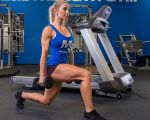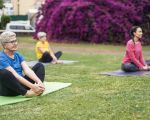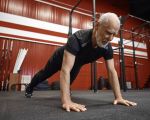- 1-Why-Bodyweight-Workouts-Are-Effective
- 2-Key-Components-of-a-Bodyweight-Workout-Plan
- 3-Designing-Your-Personalized-Routine
- 4-Progression-and-Overcoming-Plateaus
- 5-Tips-for-Staying-Motivated-and-Consistent
- 6-Real-Life-Success-Stories
1. Why Bodyweight Workouts Are Effective
Bodyweight exercises have become increasingly popular for their simplicity and effectiveness. Unlike workouts requiring expensive gym equipment, bodyweight training leverages your own weight to build strength, endurance, and flexibility. This makes it accessible for virtually anyone, anywhere—whether at home, in a park, or traveling.
One key reason bodyweight workouts deliver results is their emphasis on functional movement patterns. Exercises like push-ups, squats, and planks engage multiple muscle groups simultaneously, promoting better coordination and balance. Moreover, bodyweight workouts often involve compound movements that burn more calories and enhance overall fitness efficiently.
Fitness enthusiasts appreciate that a well-structured bodyweight workout plan can be easily adapted to all fitness levels by simply modifying reps, sets, or exercise variations. This adaptability means you don’t outgrow your routine quickly, unlike fixed-weight machines or dumbbell programs.
2. Key Components of a Bodyweight Workout Plan
To build an effective bodyweight workout plan, it’s important to include several core components:
2.1 Strength and Muscle Engagement
Incorporate exercises targeting major muscle groups: push-ups and dips for the upper body, squats and lunges for the lower body, and planks or leg raises for the core. This balance prevents muscle imbalances and supports overall strength.
2.2 Cardiovascular Endurance
Including dynamic movements like jumping jacks, burpees, or mountain climbers can elevate heart rate and improve endurance. These also increase calorie burn, contributing to fat loss and cardiovascular health.
2.3 Mobility and Flexibility
Don’t overlook warm-up and cool-down routines that focus on joint mobility and muscle flexibility. This reduces injury risk and enhances recovery.
Integrating these elements ensures a holistic approach, making your workout plan sustainable and effective.
3. Designing Your Personalized Routine
When building your bodyweight workout plan, customization is key. Follow these steps to tailor a routine to your goals and schedule:
3.1 Assess Your Current Fitness Level
Be honest about your strengths and limitations. For beginners, starting with easier variations of classic exercises (like knee push-ups instead of full push-ups) is recommended.
3.2 Define Your Goals Clearly
Are you aiming to build strength, lose fat, improve endurance, or a combination? Your goals will dictate exercise selection, intensity, and frequency.
3.3 Plan Frequency and Duration
Start with 3-4 sessions per week lasting 20-40 minutes. As your fitness improves, you can increase frequency or session length.
3.4 Structure Each Workout Session
Organize exercises into circuits or supersets to keep the session engaging and efficient. For example, pair push-ups with squats and planks to work different muscle groups consecutively.
For practical help and tools, visit Fitness where you can find tailored workout plans and product recommendations to support your bodyweight training journey.
4. Progression and Overcoming Plateaus
Progression is critical for continued improvement. Here’s how you can keep advancing your bodyweight workout plan:
4.1 Increase Repetitions and Sets
Gradually adding reps or sets forces your muscles to adapt and grow stronger.
4.2 Add Exercise Variations
Progress to more challenging variations such as pistol squats or diamond push-ups, which require greater strength and coordination.
4.3 Adjust Tempo and Rest Periods
Slowing down movements increases time under tension, stimulating muscle growth. Reducing rest times boosts endurance and cardiovascular benefits.
Many have found that mixing these progression methods keeps workouts fresh and prevents plateaus. Fitness also offers expert advice on how to overcome these sticking points efficiently.
5. Tips for Staying Motivated and Consistent
Building a workout plan is only half the battle; consistency brings results. Consider these strategies:
5.1 Set Small, Achievable Milestones
Celebrating small wins, like completing your first full push-up or holding a plank for 30 seconds, fuels motivation.
5.2 Track Your Progress
Maintain a workout journal or app to monitor improvements and stay accountable.
5.3 Find a Support System
Whether it’s an online community or a workout buddy, shared goals increase commitment.
Remember, progress may be gradual but with patience and the right plan, results are inevitable.
6. Real-Life Success Stories
Consider the story of Emma, a busy professional who struggled with gym access and motivation. By designing a bodyweight workout plan focused on her limited time and space, Emma gradually transformed her fitness level. She started with modified push-ups and bodyweight squats, progressed to full versions, and incorporated cardio intervals. Within six months, Emma lost weight, gained muscle tone, and improved her energy—all without stepping into a gym.
This example highlights how practical and powerful a well-built bodyweight workout plan can be. For those inspired by stories like Emma’s, the Fitness platform offers curated workout templates and gear recommendations perfect for home training setups.








